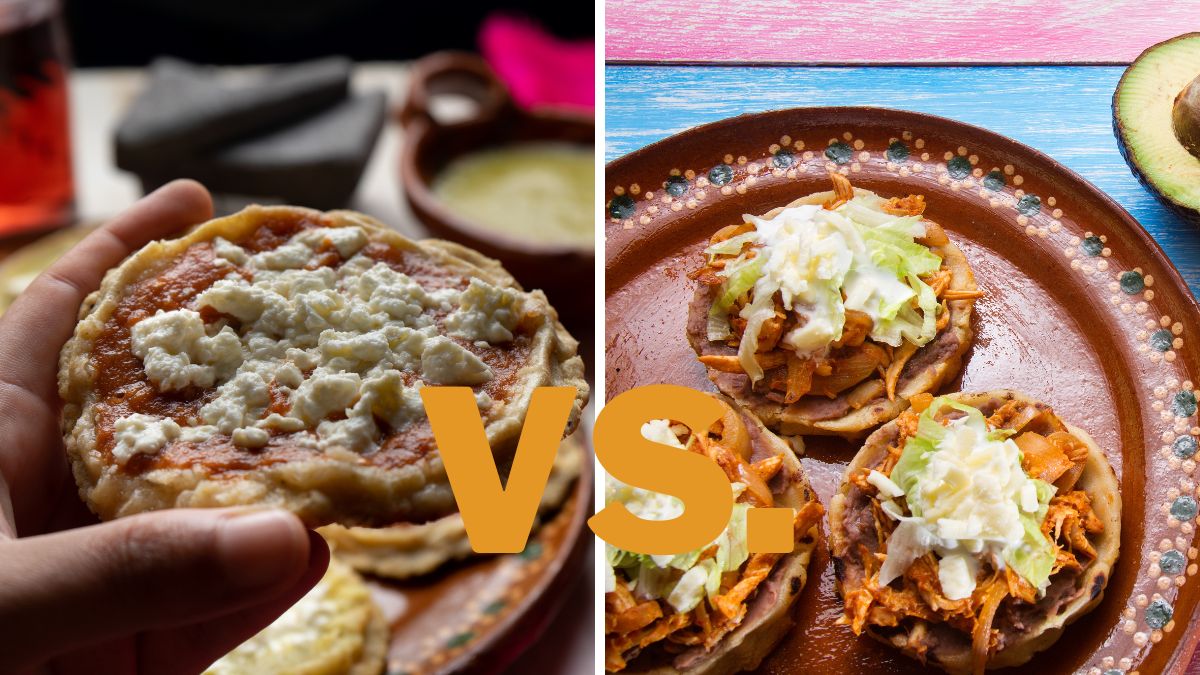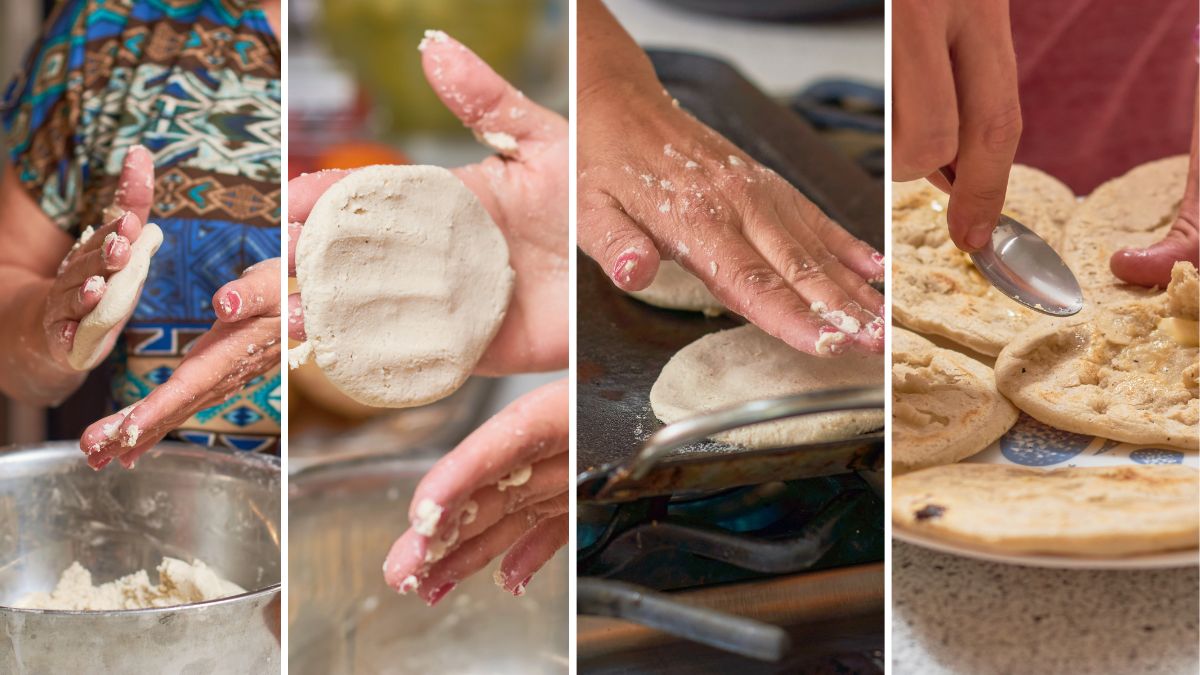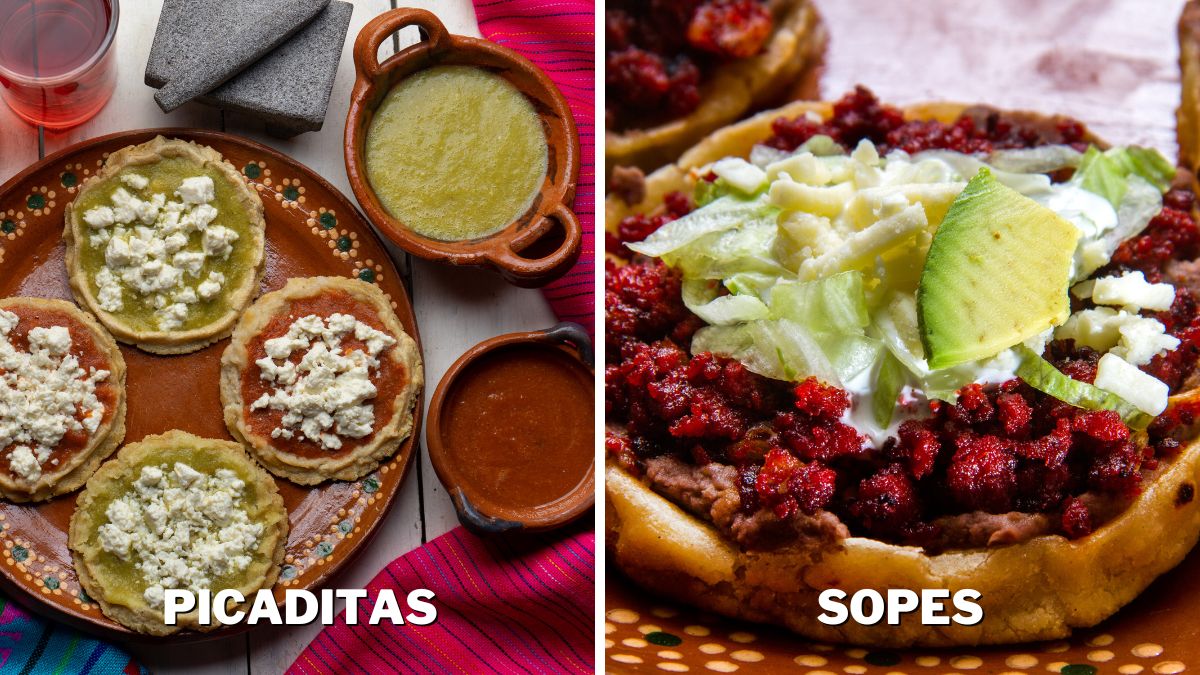Picaditas vs. Sopes: Differences Revealed

Have you ever wondered about the difference between Picaditas and Sopes? As a lifelong fan of Mexican cuisine, I always thought they were pretty much the same. Thick corn tortillas topped with meat, cheese, salsa, and avocado? Sign me up! But, recently, I discovered these tortilla cousins actually have some key distinctions. So, what are the differences between Picaditas and Sopes?
While Picaditas are made with a thin masa dough that gets lightly fried, Sopes have a thicker dough that gets griddled. Sopes also typically have higher sides to hold more ingredients. Picaditas are eaten open-faced, and Sopes folded over.
While they may look alike on the surface, Picaditas and Sopes differ in how they’re made, what goes on top, and how they’re served. My taste buds were in for an awakening. If you’re like me and thought Picaditas and Sopes were interchangeable, prepare for a revelation!
Picaditas and Sopes: Cousins with Distinct Dough
The dough is truly what sets Picaditas and Sopes apart. Whenever I make Picaditas, I make the dough from masa harina, warm water, and lard or shortening. I knead it until smooth, then roll out rounds that are about 1⁄4-inch thick. Sopes, on the other hand, start with the same ingredients, but the dough is thicker, around 1⁄2-inch.
After rolling and cutting the dough, I gently shape Picadita rounds over an upside-down bowl or tortilla press to get them into a slight bowl shape. For Sopes, I don’t do any shaping — I just pat out oval shapes. The key is not to overhandle the dough, or the Picaditas and Sopes won’t puff up when cooked.
The masa or corn dough for Picaditas is thinner, flatter, and crispier after cooking compared to the plump, thick masa used for Sopes. I pat out the Picadita dough thinly before frying, while the sope dough gets pressed into fat disk shapes.
Topping Traditions: How Picaditas and Sopes Differ
For Picaditas, the traditional topping is shredded lettuce, crumbled queso fresco or cotija cheese, and salsa. Some people like to add sliced radishes, cilantro, or lime wedges on the side for squeezing. The ingredients are meant to highlight the delicate masa base, as too many chunky toppings would overwhelm the Picadita.
Sopes, on the other hand, are heartier and made to handle more robust fillings. Refried beans or mashed black beans are commonly spread on the base, then topped with salsa, shredded cheese, crema, and avocado. Meat options like shredded chicken, ground beef, or chopped steak are also popular. Some folks pile on the toppings, turning each sope into an edible mountain!
In my view, Sopes are better suited for a main dish, while Picaditas shine as a starter or snack. Both are utterly delicious, so why choose? Make a meal of mixing and matching Picaditas and Sopes, embracing the differences between these tortilla cousins. There’s no wrong way to enjoy masa, beans, and salsa — as long as you do it with gusto!
Preparation Methods: Steps that Set Them Apart

To make Picaditas, I start with masa harina, corn flour treated with lime, and add warm water. I knead the dough until it’s pliable and slightly sticky. For Sopes, I add more water to create a looser dough that’s easy to pat out into thick disks. The extra moisture in the sope dough allows it to puff up when fried.
The biggest difference in preparation is how the tortillas are cooked. Picaditas are griddled, while Sopes are fried. To make Picaditas, I usually heat a comal or griddle over medium heat and cook the tortillas for a couple of minutes per side until they develop light brown spots.
Sopes, on the other hand, are fried in about 1/2 inch of vegetable or canola oil until golden brown, about 2 to 3 minutes. The frying process causes Sopes to puff up and develop an almost bowl-shaped indentation, perfect for holding hearty toppings.
As mentioned, Picaditas and Sopes are usually topped with similar ingredients like beans, salsa, cheese, lettuce, and avocado.
However, Sopes can handle heartier fillings since their fried shells are more sturdy. I often top Sopes with chorizo, grilled meats like al pastor or barbacoa, or fried potatoes in addition to the usual toppings. Picaditas tend to get soggy more easily under heavy or saucy toppings, so I keep the fillings lighter.
Whether griddled or fried, Picaditas and Sopes are delicious vehicles for enjoying masa harina and your favorite Mexican fillings.
Serving Styles: How Picaditas and Sopes Come to the Table

Picaditas are generally served as individual, handheld bites. Their small size, measuring around 3 to 4 inches in diameter, makes them perfect for grabbing and eating with your hands. Their petite size makes them perfect for appetizers, snacks, or street food.
I like to top Picaditas generously since their sturdy masa base can handle lots of ingredients without getting soggy. A typical Picadita will have refried beans or mashed avocado, shredded lettuce, crumbled cheese, salsa, and crema drizzled on top.
Some recipes also call for diced onions, cilantro, and queso fresco. Picaditas are usually served warm or at room temperature alongside extra toppings so you can customize each bite.
In contrast, Sopes are plated and meant to be eaten with a fork. Their larger size, around 5 to 6 inches across, makes them difficult to pick up, and they can get messy with lots of toppings. Sopes are often topped similarly to Picaditas, but in more generous portions, so a knife and fork are needed.
A typical Sope will have refried beans or mashed avocado spread on the masa base, then piled high with shredded lettuce, tomato, onion, cheese, salsa, crema, and cilantro. Sopes are usually served warm, sometimes with extra toppings on the side.
Which ones do you prefer to serve, and with what sides? I can’t wait to hear from you in the comments below!
